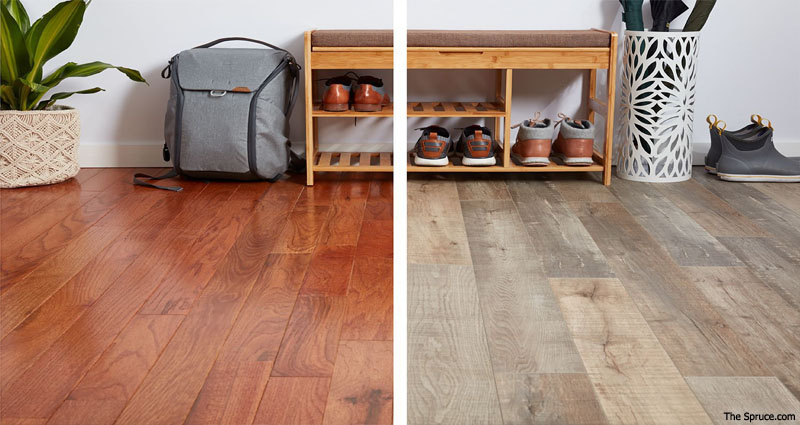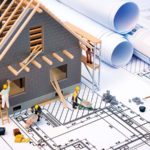Engineered hardwood is the new kid on the hardwood flooring block, so to speak. Both traditional and engineered wood floors bring benefits and downsides, as explained below. Read on to figure out whether engineered or traditional solid lumber floors are best for you.
Conventional Hardwood Floors
Solid hardwood floors may be refinished over and over again since they are usually milled to a ” thickness. Traditional wood flooring is cut this way so that the hardwood flooring can later be sanded and re-sealed. Thanks in part to this process, hardwood floors remain beautiful and durable for decades – it’s not unusual for them to last fifty years or longer.
However, there’s also a significant disadvantage of conventional wood flooring: It is affected by water and temperature. Naturally, wood expands in hot/moist settings and contracts in cold/dry conditions. This requires contractors to leave small gaps around the edges of hardwood flooring so that it can expand in the summer. (These gaps are usually hidden with baseboards.)
In addition to potentially unsightly gaps, hardwood flooring can also pose a health threat if not properly cared for. Water can linger in timber floors and cause mold, fungi, and mildew to grow. Not only do these water-lovers destroy wood; they can also cause respiratory diseases including asthma and allergies.
Given the problems that traditional lumber floors have with water, it’s not surprising that they can’t be installed “below grade,” in a basement. Likewise, most contractors will not install lumber flooring in bathrooms or kitchens, some of the most moisture-rich areas in a home. Lastly, timber floors can’t be built directly on concrete, since concrete conducts water. If you have a concrete foundation/pad, you must build plywood subflooring for your wood floors to sit on. Consumers are often put off by these installation limitations.
Engineered Hardwood Flooring
Like plywood, engineered lumber floors are made of several layers of thin wood bound together with pressure, heat, and glue. Each layer faces a different direction to increase strength. This construction process allows engineered hardwood to be installed nearly anywhere – including bathrooms, kitchens, and over concrete pads – since engineered wood does not expand and contract with temperature as traditional hardwood floors do. One last tantalizing possibility for where structurally stable engineered lumber flooring can be installed: over a radiant heating system.
A downside of the engineered timber flooring is that it can’t be refinished repeatedly, as solid lumber floors can. Deep scratches and dents are harder to fix in an engineered wood floor since engineered wood can’t be sanded down and resealed more than once or twice. This also limits the durability of engineered wood floors to around twenty-five years. A final drawback: many engineered wood floors have raised edges, where interlocking planks come together. Some homeowners find that these beveled edges create cleaning challenges.
Given these disadvantages, engineered hardwood floors can be less attractive for potential homebuyers, who may prefer solid wood floors because they can be endlessly refinished. Still, because the average person can’t distinguish between engineered and traditional wood flooring, the resale value for engineered wood floors is often comparable to that of conventional wood flooring.
Extremely eco-conscious consumers typically prefer solid timber floors, since the manufacturing process for engineered lumber flooring requires the use of noxious chemicals.
As in most aspects of life, there are upsides and downsides to both engineered and solid hardwood floors.









